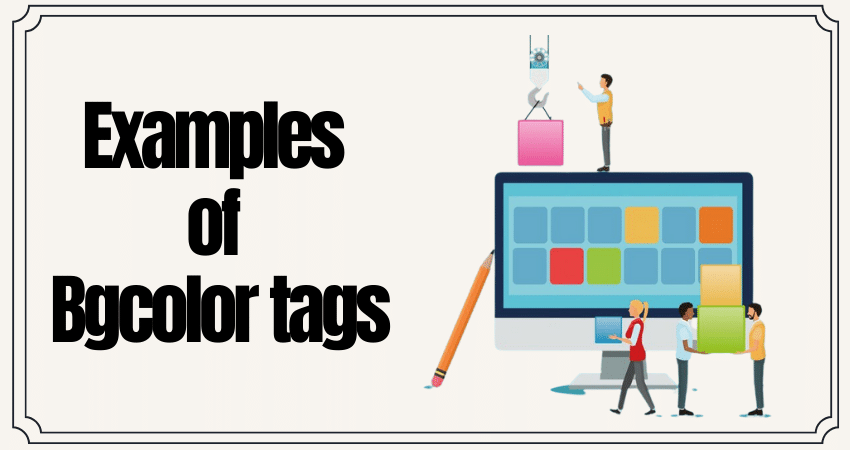If you’re a web design enthusiast, you’ve probably heard about the mysterious “bgcolor” tag that has the power to sprinkle a bit of magic on your website. Well, we’re here to demystify it for you and add a dash of humor along the way. One of the key elements that can enhance the visual appeal and functionality of a website is the “bgcolor” tag.
Introduction of bgcolor Tag
The bgcolor tag is a fundamental HTML attribute used to specify the background color of a web page. It allows web developers to choose from a vast palette of colors to create visually appealing and user-friendly websites.
Examples of Background Color Tags in Web Design
Let’s dive into ten wonderful examples of how to use the bgcolor tag to make your website pop!
1. The Intro: Groovy Background Colors
Ever visited a website that made you go “Whoa!” right from the get-go? That’s the power of a bgcolor tag with a bold, eye-catching background color. You can set the stage for your website like a magician ready to reveal a fantastic trick.
2. Going Bold: Hello, Neon!
If you want your content to scream, “Look at me!” there’s nothing like a bright neon background. It’s like your website just put on its party hat and is ready to have a blast.
3. The Zebra Effect: Alternating Backgrounds
You know zebras have their stripes for a reason, right? They want to be unique! Using alternating background colors for your content sections can give your site a quirky zebra-like appeal. It’s like a digital safari.
4. The Mystery Box: Surprise Backgrounds
Why stick to one background color when you can have a surprise waiting on every page load? Use a script to randomize your bgcolor tag and watch your visitors’ faces light up as they discover a different color each time they visit your site. It’s like a digital box of chocolates; you never know what you’re gonna get!
5. Classic White: Minimalist Marvel
Sometimes, simplicity is the ultimate sophistication. A clean, white background can give your website an elegant, minimalist touch. It’s like the little black dress of web design—timeless and always in style.
6. Camouflage Mode: Matching Colors
Want to make your content seamlessly blend with your site’s theme? Choose a background color that matches your website’s color scheme. It’s like your content is a ninja—hiding in plain sight!
7. Go Dark: Night Mode
If your website has a nocturnal side, why not give it a dark and mysterious background? Night mode isn’t just for phones; it’s for websites that like to keep things mysterious after dark.
8. Playful Patterns: Background Images
Who said bgcolor tags are limited to plain colors? You can set background images too! Imagine a website with a wallpaper of cute kittens or flying tacos. It’s like decorating your digital house with your favorite posters.
9. Seasonal Flair: Backgrounds with a Theme
Just like you decorate your home for holidays, you can decorate your website too! Use the bgcolor tag to switch up your background for special occasions. It’s like putting up Christmas lights, but on your website.
10. The Surreal Switch: Wild Animations
Bored of static backgrounds? Why not go all out and create animations using the bgcolor tag? Your website can be a digital kaleidoscope, spinning and dazzling visitors with a quirky sense of humor. It’s like a circus, but for web pages!
So there you have it—ten whimsical ways to use the bgcolor tag to make your website come alive. Remember, the bgcolor tag is like a box of crayons. You choose the colors, and your website becomes your canvas. Just keep it fun, and quirky, and don’t be afraid to let your sense of humor shine through. After all, websites should be both informative and entertaining. Happy web designing!

